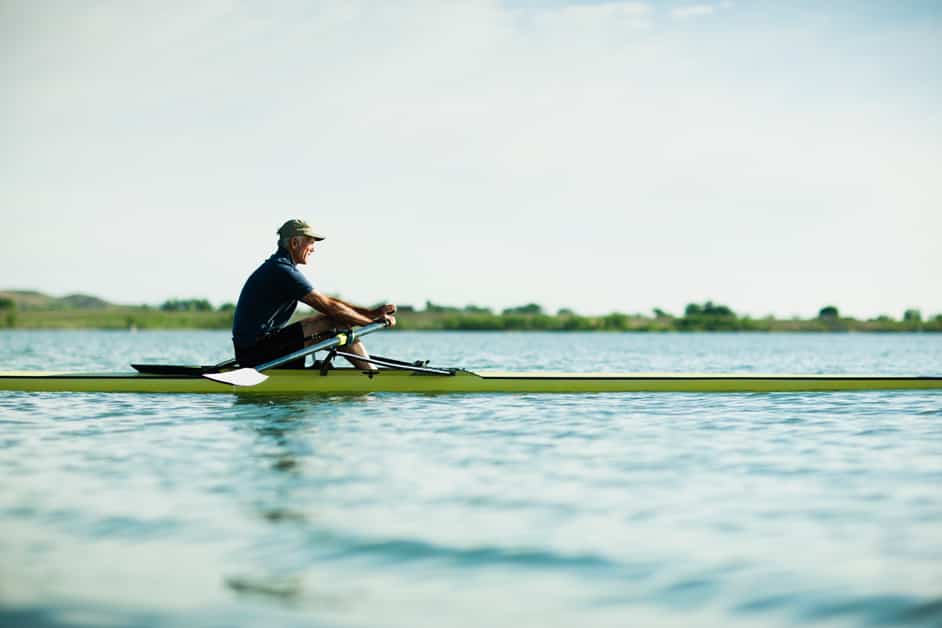Introduction
Knee pain is a global issue that affects many people. It could be due to aging, lifestyle, or injuries. Low-impact sports can help those with knee pain.
Some suitable activities include:
- Swimming
- Elliptical
- Cycling
- Yoga
- Pilates
- Rowing
- Kayaking
- Canoeing
Low-impact sports keep the joints strong and flexible. They also reduce the risk of further injury.
High-impact activities like running or jogging can cause more harm. Low-impact sports are better for those with chronic knee pain because they don’t involve jarring motions. Not only do these activities provide physical benefits, but they can also reduce stress and improve emotional well-being.
It’s important to remember your limits. But by engaging in a low-impact sport, you’re taking an important step towards healthier living without knee pain!
Benefits of Low-Impact Sports for Knee Pain Sufferers
Low-impact sports can be a blessing for those with knee pain. They provide the body with moderate physical activity, without any high-impact movements that could aggravate the discomfort. Benefits include:
- Improved strength and balance
- Increased flexibility
- Better cardiovascular health
- Stress relief
This article looks at the types of low-impact sports that can help with knee health, their potential advantages and the necessary precautions to take when participating.
Improved Mobility
Knee pain? Low-impact sports can help. Improved mobility, decreased joint pain and soreness – these are all benefits. Strengthening the muscles around the joints is key for joint health. Plus, it reduces inflammation.
Good choices are:
- Walking
- Swimming
- Elliptical workouts
- Yoga
- Cycling
Cardiovascular health and increased blood flow result. This helps reduce swelling, stiffness and discomfort related to chronic knee pain. Low-impact sports let you maintain a healthy weight, burning calories without straining your knees.
Reduced Pain
Low-impact sports are an absolute must for those with knee pain – regardless of whether it’s due to aging, injury or a medical condition. Physios and doctors often recommend biking, swimming, and walking as an effective way to reduce the agony.
The low-impact movements help ease stiffness and soreness in the knee area. Plus, they strengthen the muscles around the joint, bettering balance and steadiness. Low-impact sports also boost blood flow, allowing the joint to remain flexible and easy to move during routine activities.
Low-impact sports not only help reduce pain but also reduce inflammation and enhance joint mobility. When someone with a pre-existing knee condition begins an exercise routine of low loads and gentle motions, it “tells” their brain that the joint isn’t under excessive stress. This calming response can help reduce inflammation in the area, leading to improved function over time.
Though high-intensity activities like running or jumping may not be suitable for those with knee issues, starting slow with gentle movements is an excellent way to get active again. Low-impact exercises are safe and successful, so get out there and start exercising!
Improved Strength
Low-impact sports can help build joint strength, which is great news for those with knee pain. These exercises don’t stress the joints or put strain on muscles or ligaments. This makes them much safer than other activities. With improved strength also comes reduced pain, improved flexibility and range of motion, and an overall better quality of life.
One way to start exercising is by doing aquatic exercises. You use more energy in water than on land, so you don’t need to do as much activity to get results. Some options are swimming laps, treading water, step aerobics, and toning exercises like leg lifts and hip raises in the pool.
Low-impact jogging and cycling machines are another option to strengthen knees. Expectant mothers can usually do shallow water exercises if their doctor allows it. Also, going for short walks with light weights can warm up your workout routine and improve knee joint strength without putting too much pressure on the area.
Low-impact activities will help build muscle mass around weakened ligaments, supporting joints and preventing further injury. Remember to get proper form each time you exercise so you don’t cause any more pain or injure yourself.
Low-Impact Sports Options
Do you suffer from chronic knee pain? There are ways to stay active and get moving. Low-impact sports are a good choice for those with knee issues. They let people do physical activity and reduce the chance of further injury or joint irritation.
This article will look at the different low-impact sports that could help you stay fit and healthy while protecting your knees:
Swimming
Swimming is fab for knee pain sufferers as it works lots of muscles around the knee. It also helps increase flexibility and range of motion. Plus, swimmers can boost their speed faster than treadmill runners due to fewer joint impacts.
You’ll need a pool for swimming plus special gear – freestyle, backstroke, breaststroke, butterfly stroke and more. Plus, kickboards or pullbuoys too.
If you want to use swimming to exercise or for physio, it’s best to chat with a doctor or physio first. This way, you won’t get hurt or cause more pain when you hit the pool!
Cycling
Cycling is a great choice for people with knee pain. It is a low-impact, full-body aerobic workout. Joint stress is limited by cycling. Calories are burned and cardiovascular endurance is built efficiently.
Two types of cycling exist: upright stationary and low-impact recumbent. Upright stationary cycles are a familiar type for older generations. It provides a great cardio workout with no joint strain. For more cushion try a recumbent cycle. You lean back into the seat and pedal in the air – great for those with knee issues.
Check with a doctor before buying a bike. No matter the type, you will have fun and improve cardiovascular health and stamina.
Yoga
Yoga is a great exercise for people with knee pain. There are poses that can be tough due to knee limitations, but also some to ease tight muscles and increase flexibility. These poses focus on stretching and strengthening legs, hips and core muscles. An example is Supported Butterfly Pose, which involves crossing your legs and bringing feet close to the body while lying down. This can help support lower body without putting intense pressure on the knees.
Yoga sessions may also include deep breathing and meditation. This can center and relax from stress that might also cause inflammation in sensitive areas such as the knees. Furthermore, a guided yoga class in a warm environment might provide relief from conditions like osteoarthritis or rheumatoid arthritis.
Pilates
Pilates started in the early 1900s. Joseph Pilates created this low-impact exercise. It includes breath control, body alignment and a mind-body connection. It helps people learn how to move their bodies for day-to-day activities. Moves and holds can be done on a mat or with special equipment.
Pilates can stretch and strengthen you. It increases your flexibility, strength, balance, coordination, posture and overall body control. It can reduce stress and improve chronic pain and immobility. It can also reduce injury risk during other forms of exercise.
Classes usually focus on the lower body. They focus on the pelvic floor muscles and abdominal wall muscles. These help with posture and balance for poses like planks and down dog.
Tips for Getting Started
Knee pain? Don’t worry! There are low-impact sports that can help keep you in shape. In this article, we’ll discuss tips to get started so you can exercise without stressing your joints. No more obstacles! Get physically active and improve your knee health.
Start Slow
When getting back into physical activity, start slow! Doing too much can increase the risk of injury and make knee pain worse. Do low-impact activities for 15-20 minutes, several times a week. Try exercise classes or sign up for a team sport like dragon boat racing or ultimate Frisbee for motivation.
If you feel pain after activity, decrease intensity and increase repetition. For example, if running for 10 minutes causes knee pain, run for two minutes and then reset the timer until you do 10 minutes in total. Even a slow jog instead of a brisk walk can help strengthen muscles while managing knee pain symptoms or arthritis.
When choosing activities, consider the impact on the body. Avoid exercises that put extra stress on weight-bearing joints like the knees, as this can lead to osteoarthritis flares and bone fractures. Strength training with resistance bands or light dumbbells plus simple stretches will give you most benefits without adding pressure to your joints.
Listen to Your Body
Never underestimate the significance of listening to your body when you have knee pain. Stop doing whatever activity is causing you distress and search for alternatives. This can be challenging, as competitive athletes may have difficulty recognizing when to rest and when to push through the pain. In contrast, those with a less active lifestyle may not know how hard it is safe to push themselves when they first begin an exercise program.
You should always ask your doctor or physiotherapist for tips on managing your underlying condition, as well as any activity limits that might be necessary. Keeping a log of activities that cause you pain, and any symptoms that follow, can also be beneficial. Discuss them at your next visit with a healthcare provider or physical therapist.
Remember that low-impact exercises don’t necessarily mean low-intensity exercises. So, be aware of how hard you’re pushing yourself during activity sessions and take regular breaks if required. The “talk test” can be useful here – if it becomes difficult to have normal conversation during an activity session, then you’re probably doing too much and need a break!
Focus on Form
Selecting an exercise activity with your physical limitations in mind is key. Yet, mastering the correct form is even more important. Improper form can lead to more injury and knee pain. Yoga, Pilates, tai chi, or another low-impact physical activity? Form comes first!
If learning how to do the exercises correctly is hard, take a certified class for those with knee pain or hire a personal trainer. Cost and convenience an issue? Try one of many online programs or instructional videos. But, get your doctor’s approval before attempting them.
Start slow and increase frequency and intensity little by little. Listen for signs of discomfort and adjust. Speak to your doctor if symptoms remain.
Conclusion
Low-impact sports are a great way to stay active without stressing your knees. Each activity can help reduce risk and improve flexibility and strength. But, always check with your doctor first! Start slowly to avoid knee pain. Listen to your body and watch out for trouble spots. If you need help, speak to a professional.
With time and patience, these low-impact sports can help manage knee pain while looking after joint health and mobility:
Frequently Asked Questions
Q1: What are low-impact sports?
A1: Low-impact sports are activities that involve minimal stress and strain on the body. Examples of low-impact sports include swimming, cycling, yoga, and walking.
Q2: What are the benefits of low-impact sports?
A2: Low-impact sports offer a variety of benefits, including improved cardiovascular fitness, muscle strength, flexibility, and coordination. Additionally, they can help reduce stress, improve mood, and promote weight loss.
Q3: What are some low-impact sports for knee pain sufferers?
A3: Swimming, cycling, yoga, and walking are all great low-impact sports for people with knee pain. Additionally, tai chi and aqua aerobics can be beneficial for those with knee pain.





